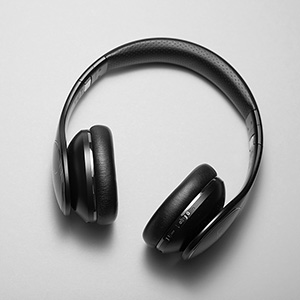Biography
Methods: Sixteen patients over 12 weeks after stroke and determined gait as categorized using a Functional Ambulation Category score of 3 or 2 were contained in this pilot study. Participants obtained eight 30-min sessions of virtual reality for training through four months as part of their normal inpatient rehabilitation program. Feasibility was evaluated using compliance with all the practice, undesirable events, adventures of the participants along with the physiotherapi...
Methods: Sixteen patients over 12 weeks after stroke and determined gait as categorized using a Functional Ambulation Category score of 3 or 2 were contained in this pilot study. Participants obtained eight 30-min sessions of virtual reality for training through four months as part of their normal inpatient rehabilitation program. Feasibility was evaluated using compliance with all the practice, undesirable events, adventures of the participants along with the physiotherapists; and efficacy together with all the Berg Balance Scale, the center of pressure pace, Functional Ambulation Category and 10-meter walking evaluation. Outcomes: Participants positively assessed the intervention and appreciated the coaching sessions. Additionally, physiotherapists observed that the training as possible and beneficial to enhancing balance or gait. Compliance with all the practice was 88 percent and no severe adverse events happened. The Berg Balance Scale, the anterior-posterior center of pressure speed, Functional Ambulation Category, and 10-meter walking evaluation revealed significant improvement after four months of instruction Conclusion: This analysis shows that virtual reality for training in patients early after stroke is achievable and might be effective in enhancing balance and/or gait ability. Additionally, cognitive participation, practical relevance and the existence of opinions improve learning [5]. In present physiotherapy or occupational therapy, it isn't easy to fulfill all these above-mentioned coaching attributes as treatment might be dull and resource-intensive [6-9]. Additionally, the frequency and seriousness of current treatments are suggested as inadequate to reach maximum recovery during the first period of rehabilitation [8,10]. There's a requirement for engaging, inspiring and diverse treatment that achieves maximal healing [11]. Since virtual reality for training is evidenced by individualized, higher intensity training in many different virtual environments with a high number of real-time responses [13-15] it may be valuable in stroke rehabilitation. This is supported by recent research [12,15-18]. But, virtually all research on the impact of VR on balance and/or gait capacity was running at the chronic stage after brain injury [9,12,16,17,19-23]. Due to the possible relevant qualities of VR for motor learning and neuroplasticity [14], VR might be of more added value throughout the prior rehabilitation stage. On the other hand, the outcomes of the studies can't be generalized to the entire population of patients with stroke since comprised participants had a comparatively high functional level about balance and gait at the onset of the VR intervention. A scarcity of research including patients with reduced functional status after stroke may be brought on by the concept that the feasibility of utilizing advanced VR technology might be limited due to cognitive, visual or endurance impairments. Due to the anticipated promising consequences of VR training to the healing of balance and gait in patients who have reduced operational level early after stroke, it's very important to inquire into the feasibility of the innovative type of training and also to ascertain whether the above-mentioned impairments interfere with the usage of virtual reality for training early after stroke. Patients with stroke who have been after an inpatient rehabilitation program using a treatment aim to enhance balance and/or gait. Inclusion criteria consisted of hemiplegia caused by a stroke, a time because stroke of less than 12 weeks, a Berg Balance Scale (BBS) rating of 20, i.e. the minimal degree of balance deemed secure for balance interventions [30], and also a Functional Ambulation Category (FAC) rating of 3 or 2 out of 5 [31]. All participants provided written permission to utilize data obtained through the rehabilitation program for study, and anonymity was ensured. The GRAIL includes a dual-belt treadmill using a drive system, a motion-capture system (Vicon, Oxford, UK) and also speed-matched virtual surroundings projected onto a 180° semi-cylindrical display The virtual reality for training program consisted of 2 30-min sessions of exercises around the GRAIL a week for four months. Participants wore a safety harness which has been connected to an overhead suspension system but didn't offer weight support. A predefined routine of VR software was utilized throughout the practice sessions of this four-week intervention. This predefined protocol has been innovative starting with inactive balance exercises focussing on altering weight, followed by coaching lively balance and, if possible, coaching gait skill. Each program may be individualized to the individual's skill concerning difficulties, such as by adjusting speed, duration, the sum of simultaneous activities and the quantity of real-time visual, sensory or sensory feedback throughout the exercises. A physiotherapist, who is certified for working together with the GRAIL, determined the development of their training sessions. The physiotherapist controlled the degree of the exercises, judged if a brand new and harder application could be utilized and guaranteed that security and quality of motion were preserved throughout the practice. These interviews were conducted after the final training session. The queries about the patients' experiences in the virtual surroundings comprised understanding and sense of existence in the virtual surroundings and were partially translated and adapted from the ITC-Sence of Presence Inventory poll of Lessiter et al. [33]. The statements that were covered in the interviews in the arbitrary sequence are exhibited in Tables 1 and 2.
show more...